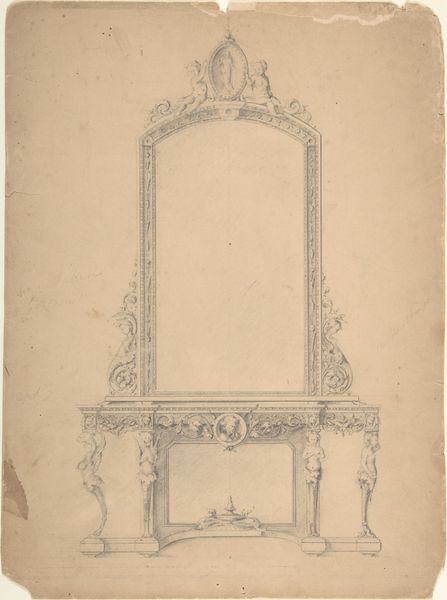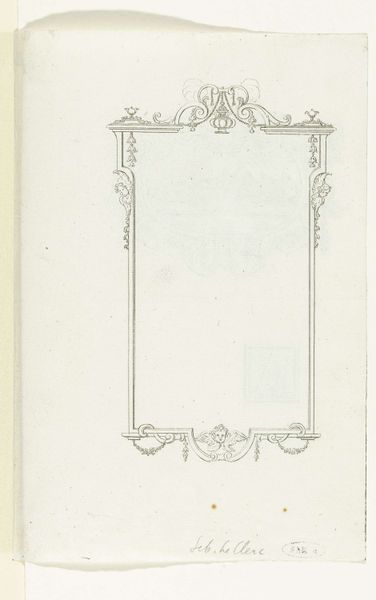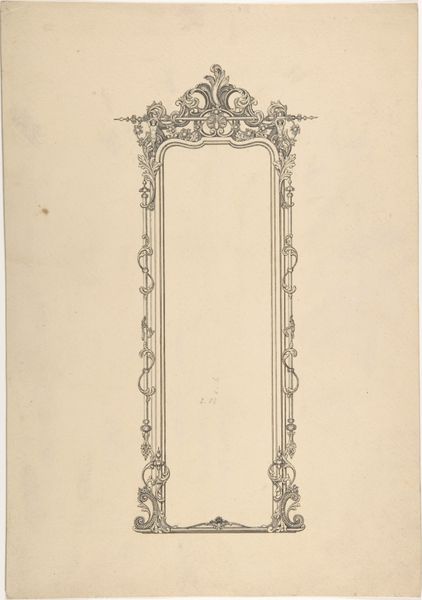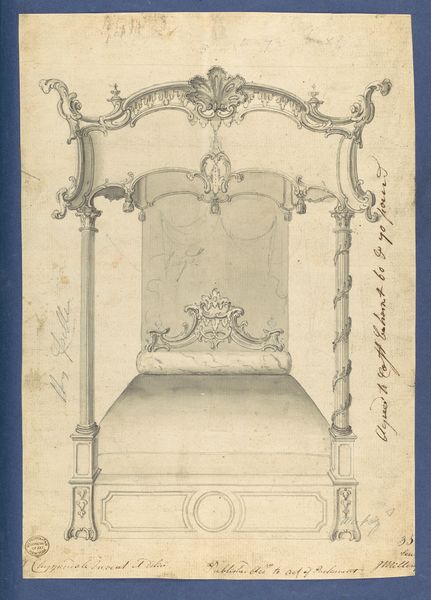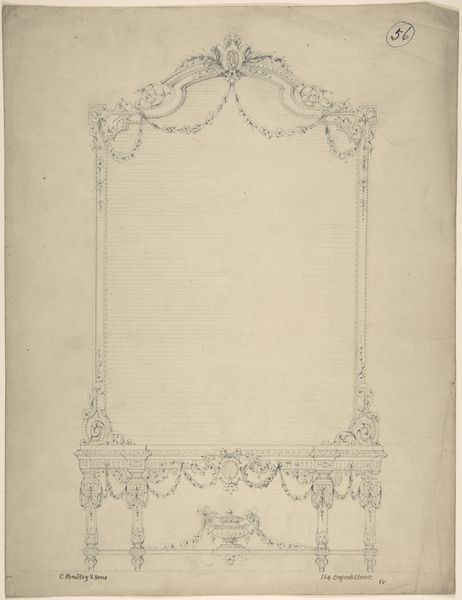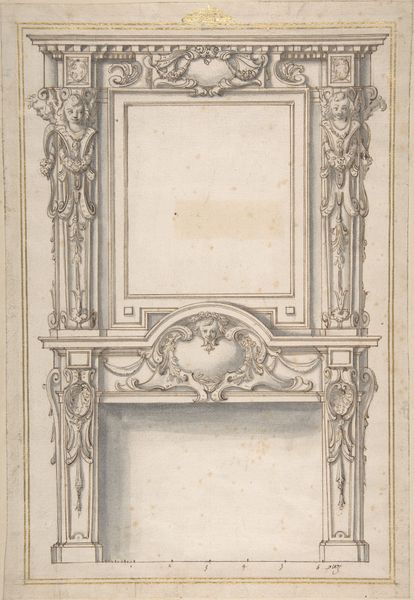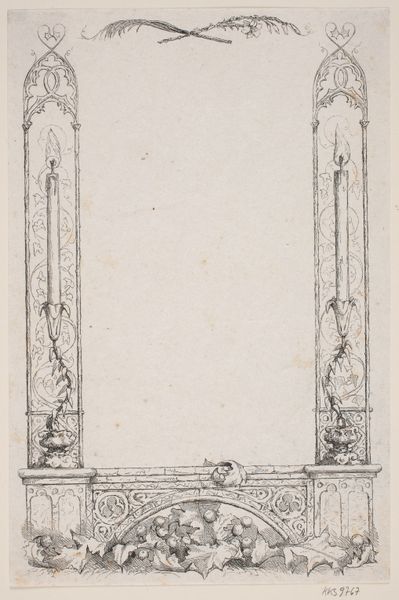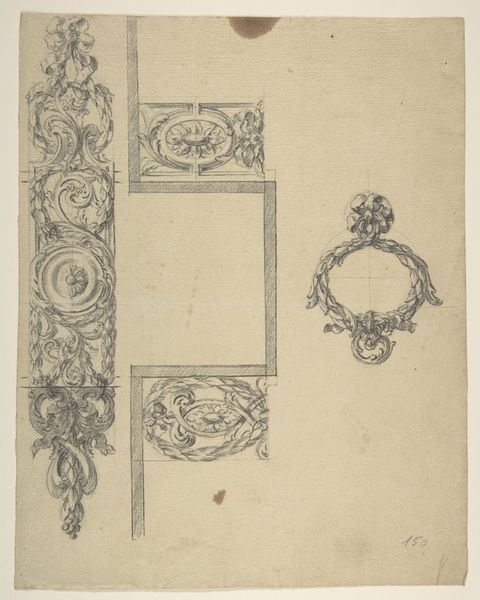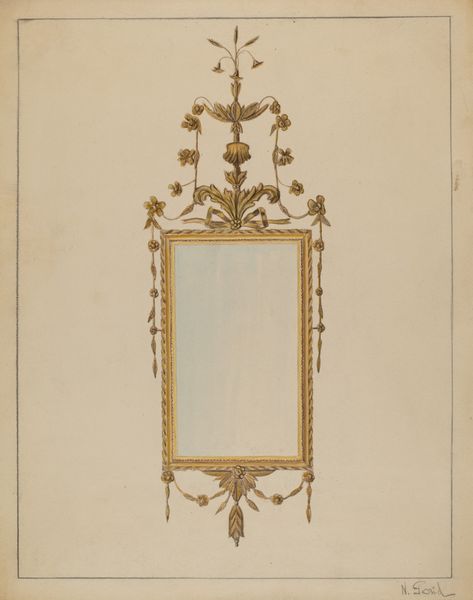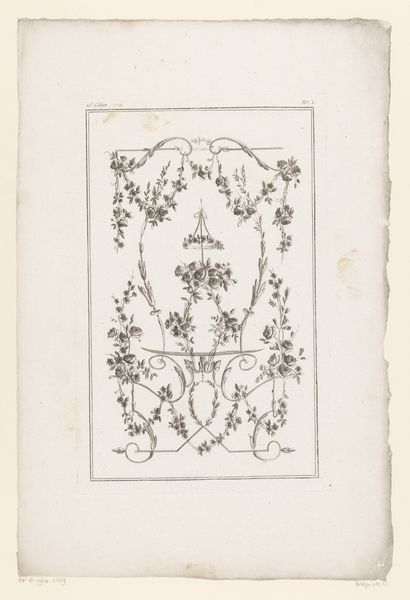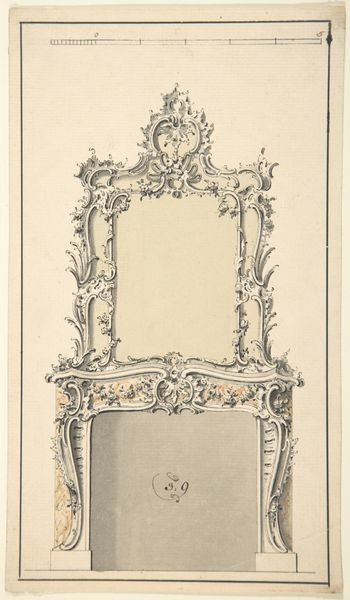
drawing, paper, pencil
#
drawing
#
paper
#
pencil
Dimensions: height 225 mm, width 147 mm
Copyright: Rijks Museum: Open Domain
Editor: This is Henri Cameré's drawing "Spiegel," created sometime between 1864 and 1894, using pencil on paper. I’m struck by the emptiness within the ornate frame. It feels like it’s missing its reflection. What do you make of it? Curator: It's intriguing, isn't it? This isn’t just a depiction of a mirror frame; it's a commentary on absence. Consider the era: mid-to-late 19th century, a period rife with societal constraints, especially for women. The mirror, traditionally a symbol of vanity and female identity, is here vacant. Does it signify a lack of agency or perhaps a rejection of the prescribed roles dictated by society? Editor: So you’re suggesting the empty space is a deliberate statement about the limitations placed on women during that time? Curator: Precisely. Think about the gilded, elaborate frame itself. Is it beautiful or suffocating? Does it confine what should be a space for reflection and self-discovery? The intricate details, rendered with such precision, almost seem like bars, trapping the potential for authentic representation. Editor: That makes me reconsider my initial interpretation. I was so focused on what wasn’t there that I missed the critique of what *is* there. The frame isn't just decorative; it's symbolic of societal expectations. Curator: Exactly! And by leaving the mirror empty, Cameré invites us to question these expectations and perhaps envision a different reflection, one that isn’t dictated by patriarchal norms. What new meanings do you see in the frame now? Editor: I see it as a challenge, a space waiting to be filled with a more authentic self-image. Thanks; I'll definitely remember this piece when exploring representations of women. Curator: Indeed! Considering absence can be just as powerful as presence, revealing unspoken truths about identity, power, and representation.
Comments
No comments
Be the first to comment and join the conversation on the ultimate creative platform.
